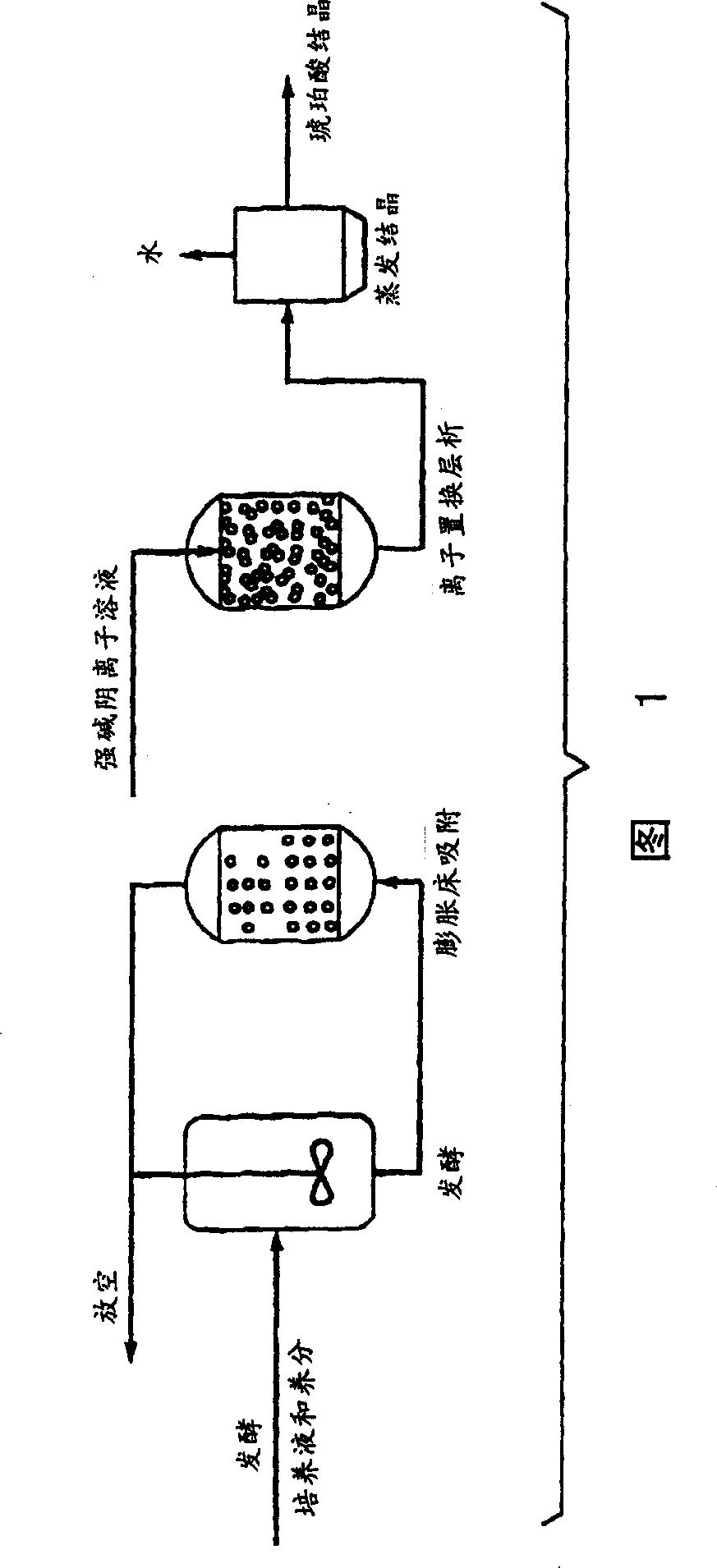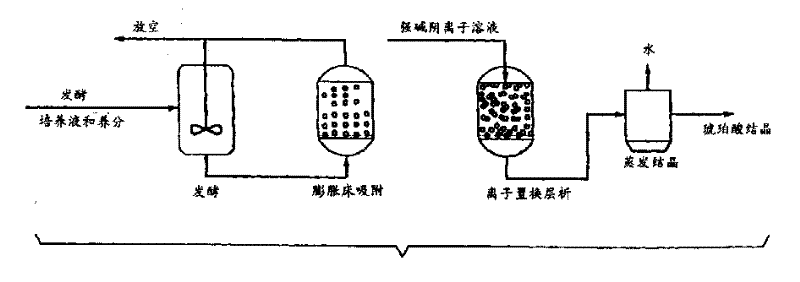Purification of organic acid using anion exchange chromatography
An anion, inorganic anion technology, applied in separation methods, organic chemistry, separation/purification of carboxylic acid compounds, etc., can solve problems such as increasing the cost of purified acid
- Summary
- Abstract
- Description
- Claims
- Application Information
AI Technical Summary
Problems solved by technology
Method used
Image
Examples
Embodiment Construction
[0040] Obtain succinate from fermented broth
[0041] Total amount of succinic acid in fermentation broth before ion exchange = 4 kg
[0042] Volume of succinic acid broth before ion exchange = 4 liters
[0043] Succinate concentration determined by HPLC = 58.14 g / L
[0044] Lactate concentration determined by HPLC = 5.05 g / L
[0045] Acetate concentration determined by HPLC = 3.89 g / L
[0046]Fermentation Broth pH =
[0047] Amount of succinate (retention solution) after ion exchange = 19.2 kg
[0048] Volume of succinate solution (retention solution) after ion exchange = 19.2 liters
[0049] Succinate concentration determined by HPLC = 4.28 g / L
[0050] Lactate concentration = 0.23 g / L
[0051] Acetate concentration = 0.34 g / L
[0052] Retention solution pH =9.3
[0053] Ion exchange column bed volume = 7 liters
[0054] Ion Exchange Column Diameter =4″
[0055] Flow rate = 21.6 liters / hour
[0056] =3BV / hr
[0057] The ...
PUM
 Login to View More
Login to View More Abstract
Description
Claims
Application Information
 Login to View More
Login to View More - R&D
- Intellectual Property
- Life Sciences
- Materials
- Tech Scout
- Unparalleled Data Quality
- Higher Quality Content
- 60% Fewer Hallucinations
Browse by: Latest US Patents, China's latest patents, Technical Efficacy Thesaurus, Application Domain, Technology Topic, Popular Technical Reports.
© 2025 PatSnap. All rights reserved.Legal|Privacy policy|Modern Slavery Act Transparency Statement|Sitemap|About US| Contact US: help@patsnap.com



